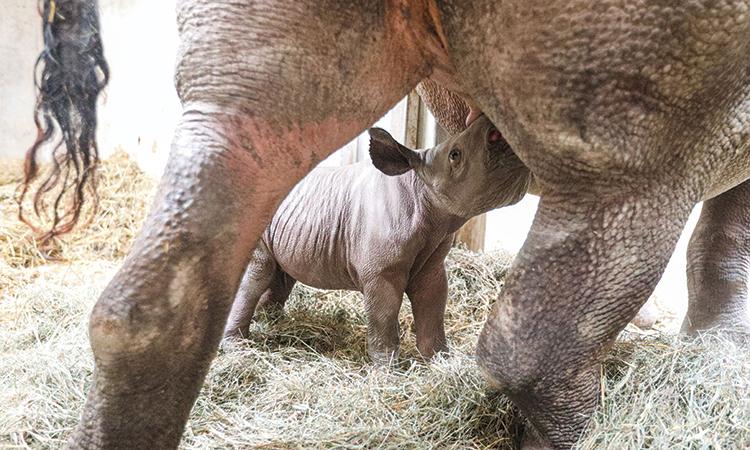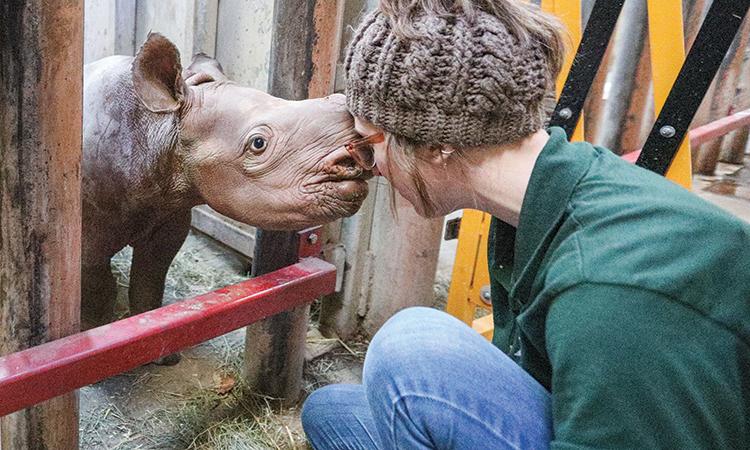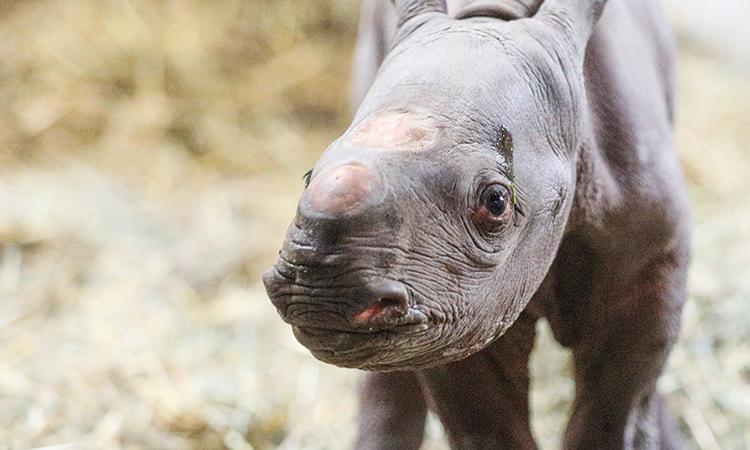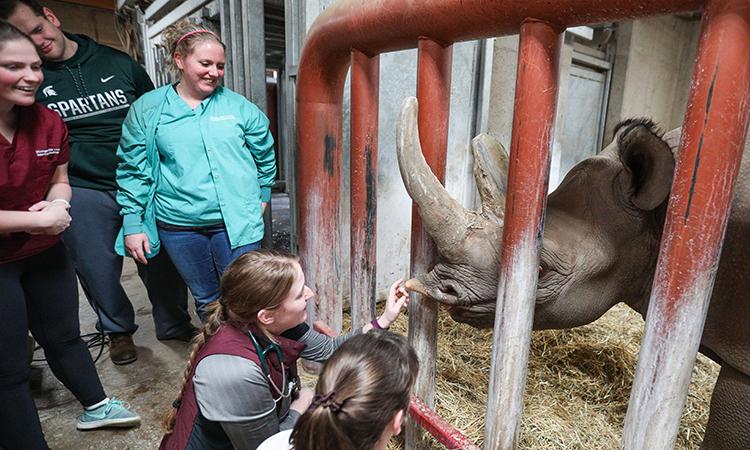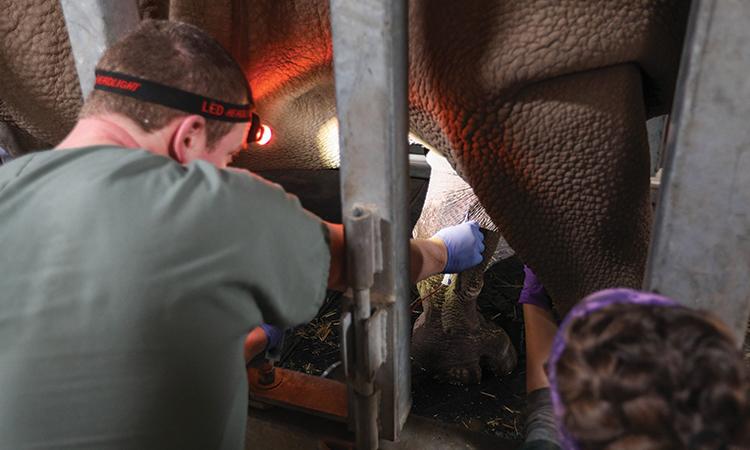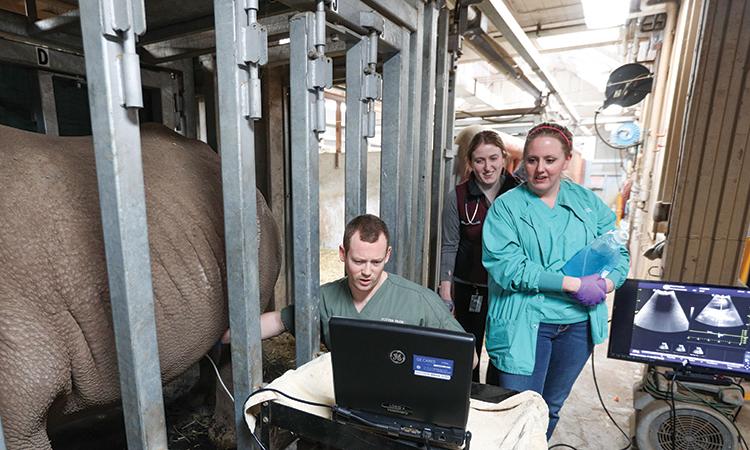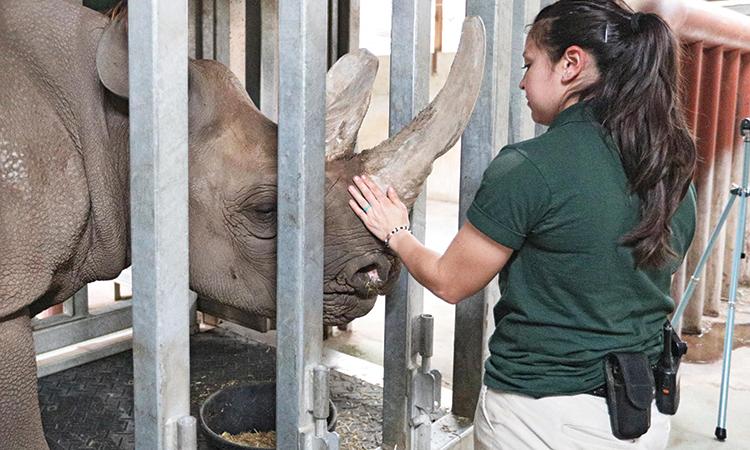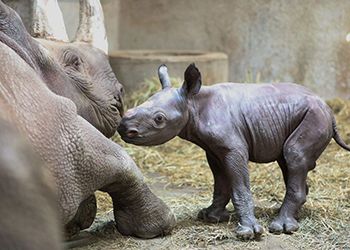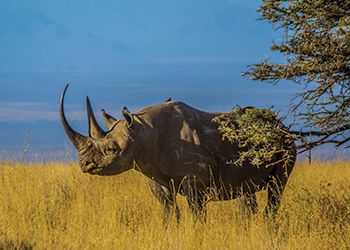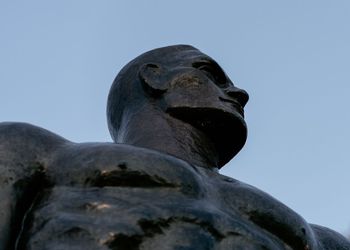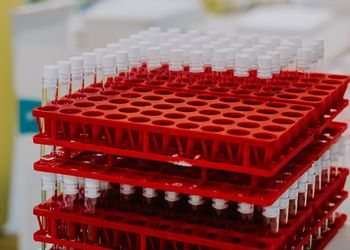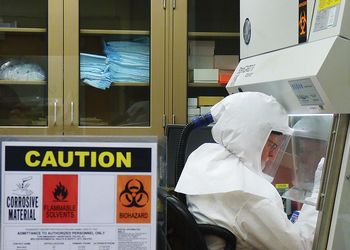Jaali Times
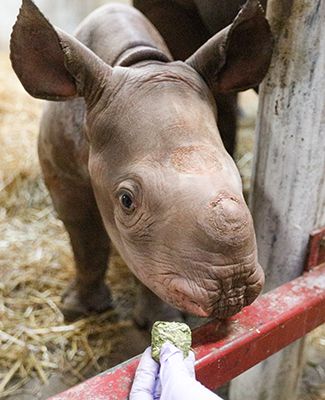
Jaali Times
Christmas Eve 2019 brought a special gift to the world when a rare eastern black rhino was born at 5:40 a.m. at Lansing’s Potter Park Zoo.
April 1, 2020Doppsee, the calf’s mother, had been closely monitored during her 15-month long pregnancy by a dedicated team of animal scientists that included MSU veterinarians and students. The baby calf—a boy named Jaali, pronounced “Jolly”—stood within the first few hours of being born and has since stayed close beside mom in the protected pen at the zoo.
Valued veterinary experience
Caregivers report that Doppsee, unlike most of her breed, has a docile and gentle disposition that allows zookeepers to work closely with her, providing opportunities for MSU’s veterinary medical students to observe physical exams, blood draws and ultrasound skills.
“Collaborating with Potter Park Zoo is a wonderful educational experience, not only for our veterinarians, but also for our veterinary medical students,” says Julie Strachota, clinical instructor for MSU’s Department of Large Animal Clinical Sciences and resident for the Large Animal Theriogenology Service. “I never would have expected that I would be doing transrectal and transabdominal ultrasounds on a black rhino.”
The veterinarians and zookeepers monitored Doppsee and her fetus weekly, providing opportunities for MSU’s veterinary medical students to participate in a rare and extraordinary learning experience. Most importantly, they ensured that she and her baby calf were kept safe, happy and healthy.
“Being able to get this hands-on experience is invaluable to me, as Doppsee is a species I am not able to work with often, so this experience continues to help me learn more about what it means to be a veterinarian,” says Bridget Walker, a third-year veterinary medical student.
Ronan Eustace, adjunct professor at MSU’s School of Veterinary Medicine and director of animal health at Potter Park Zoo, mentored veterinary students during summer sessions and oversaw the regular visits.
“Dr. Eustace always welcomes us to bring as many students as we can to work with the animals at Potter Park Zoo,” says Strachota. “During one of our ultrasound examinations, one of the senior students commented that it was ‘the best day of veterinary school.’ What the zoo is doing for our veterinary curriculum is invaluable.”
Critical conservation effort
While important to the pregnancy, the ultrasounds and blood tests on Doppsee provided more than imaging of her baby. Black rhinoceroses are critically endangered, with fewer than 5,500 remaining in the wild and 60 in protected environments.
Doppsee carries valuable genetics in the captive population of eastern black rhinos. The more these genetics spread, the greater chance there is of preserving the global population of black rhinos.
With the help of Monica Stoops, lead scientist of Omaha’s Henry Doorly Zoo and Aquarium, zookeepers and veterinary staff were able to develop an understanding of Doppsee’s hormone levels, estrus cycle and behavior. Doppsee, and the valuable data gathered about her cycle and pregnancy, contributed to several research studies. These studies will provide valuable information on black rhino reproduction—information that cannot be obtained from wildlife populations.
“If we can maximize reproductive success in these captive populations, then they may become sustainable—and that’s the goal,” says Eustace.
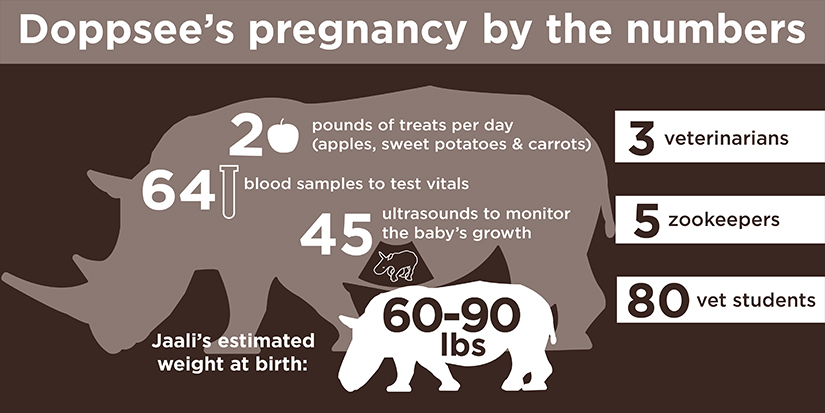
Contributing Writer(s): Caroline Brooks


